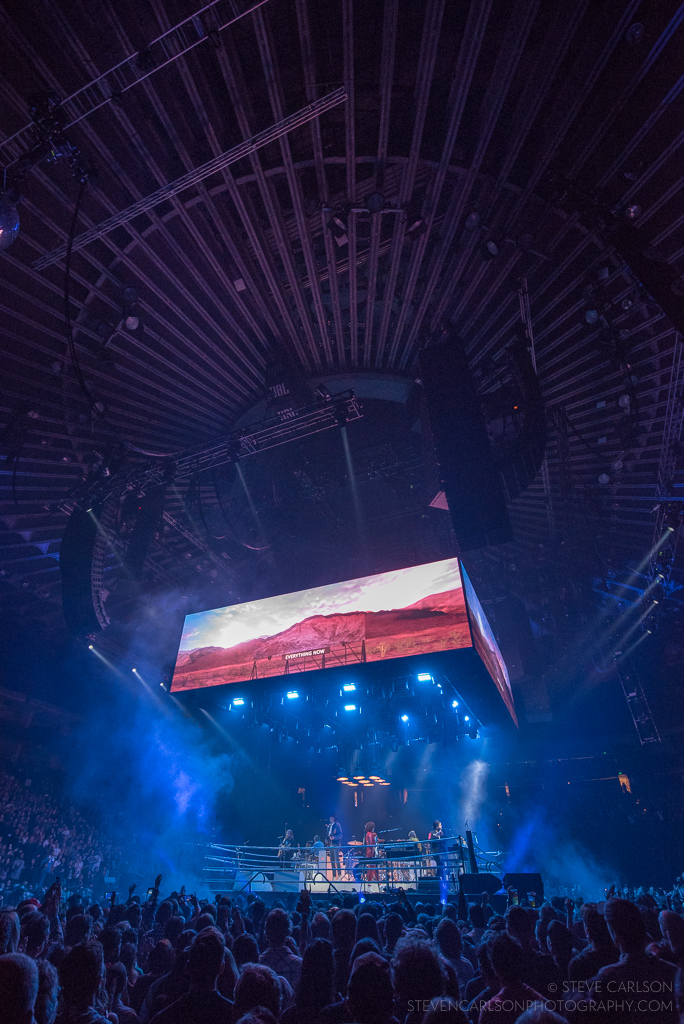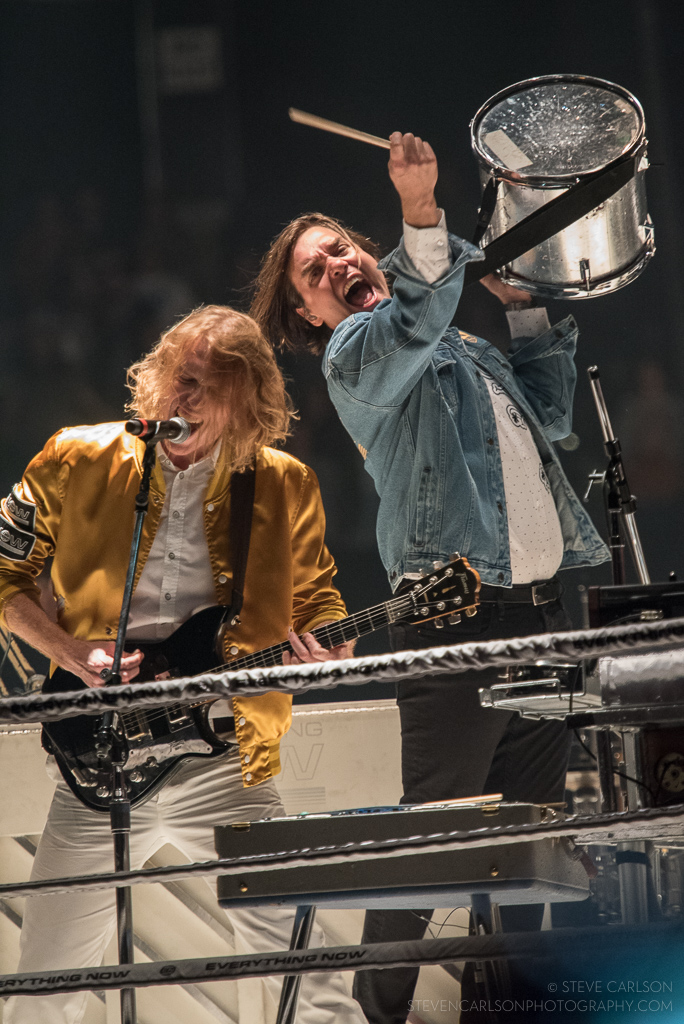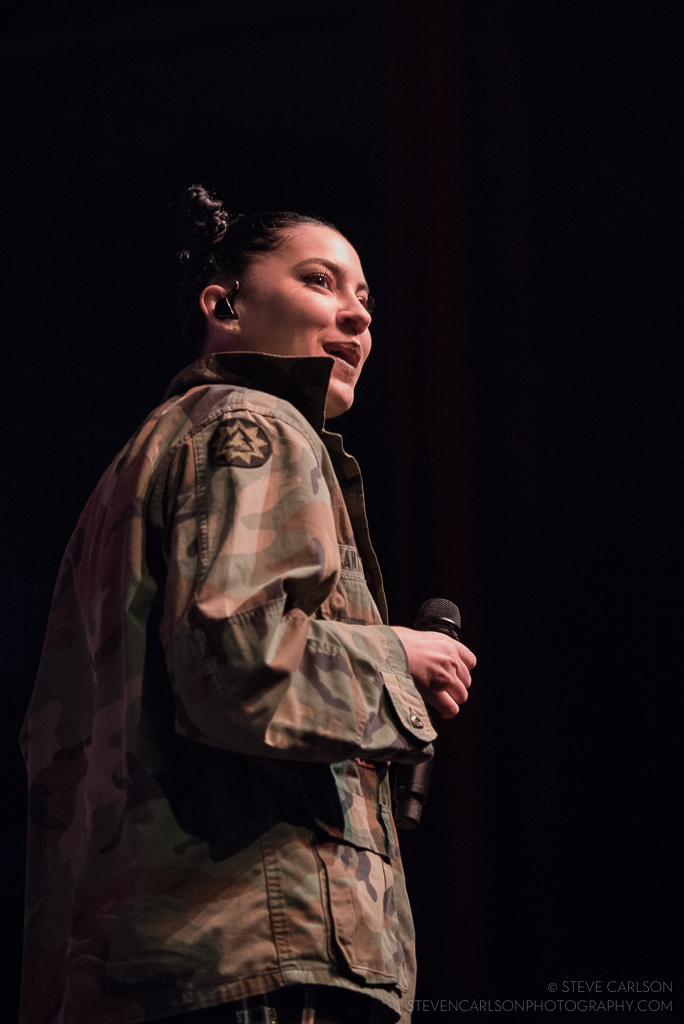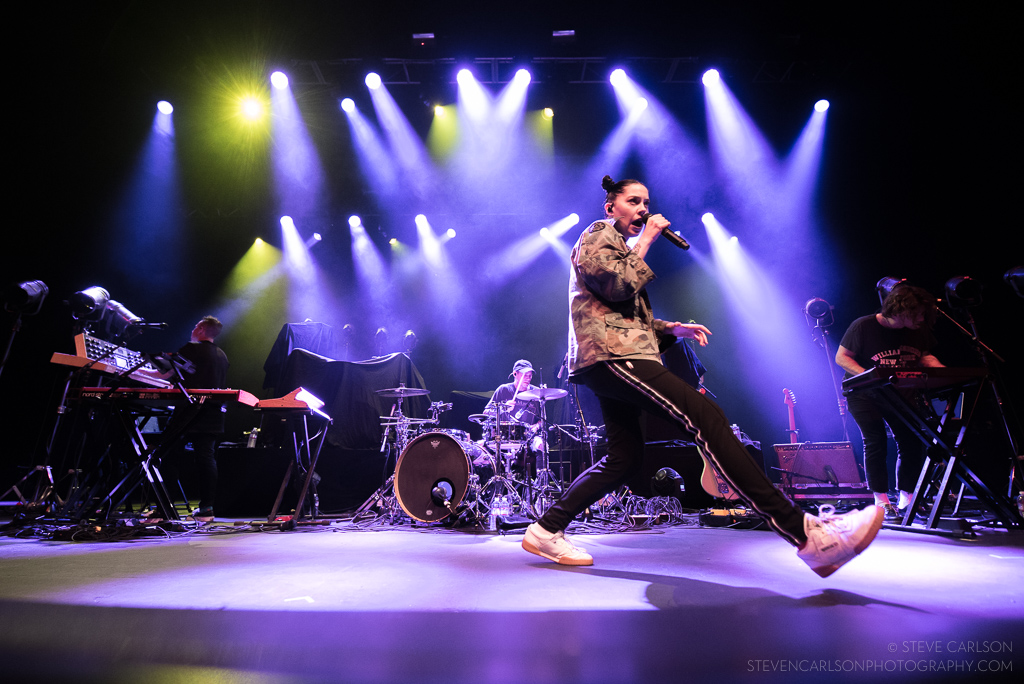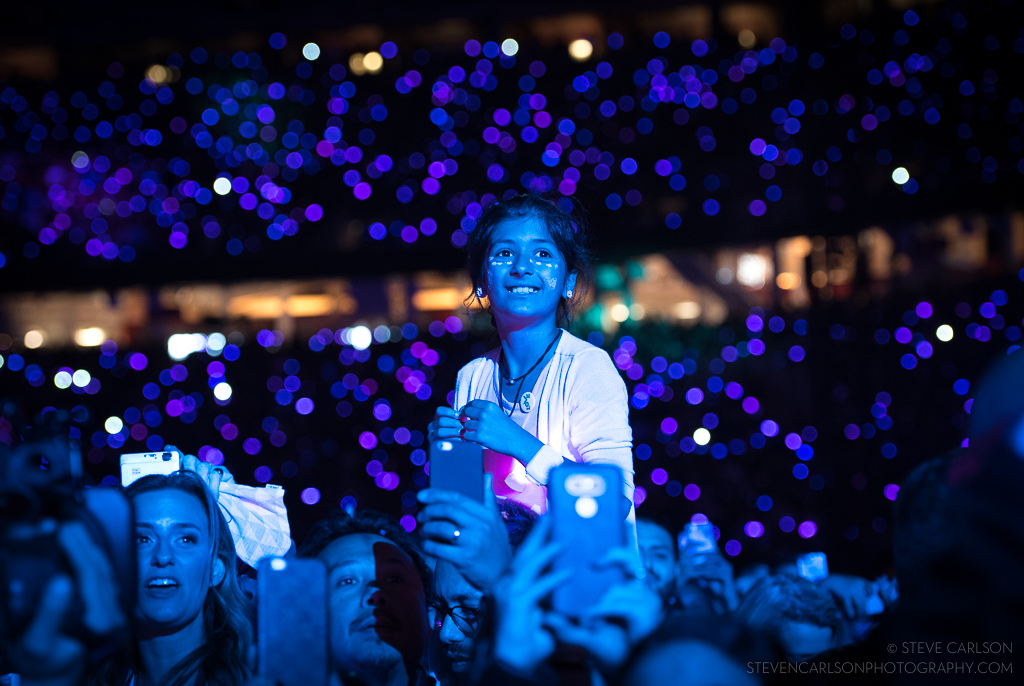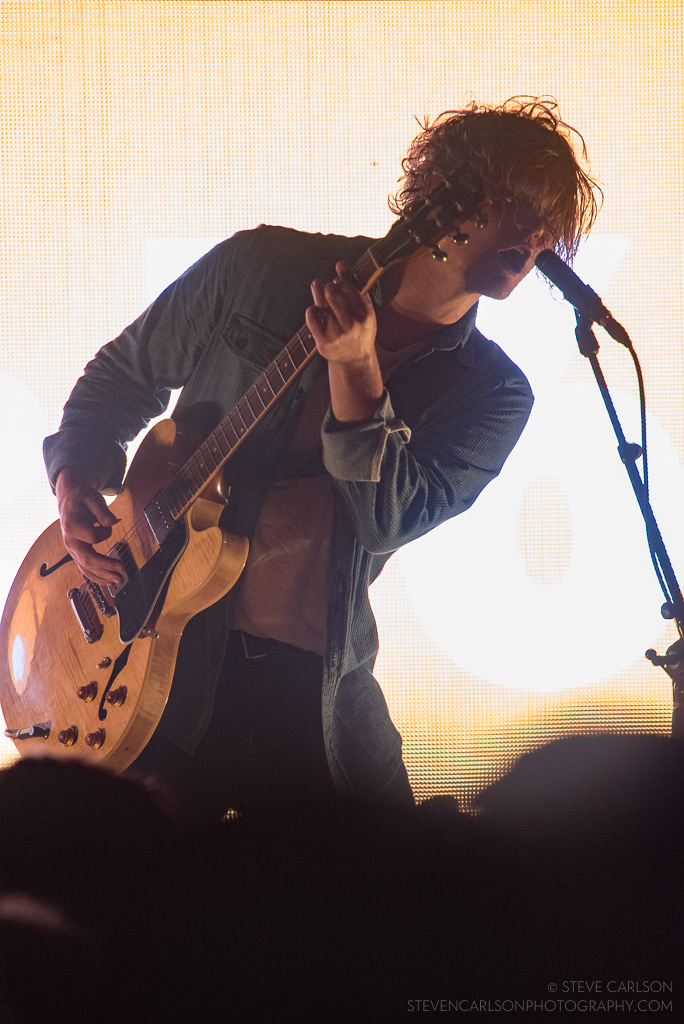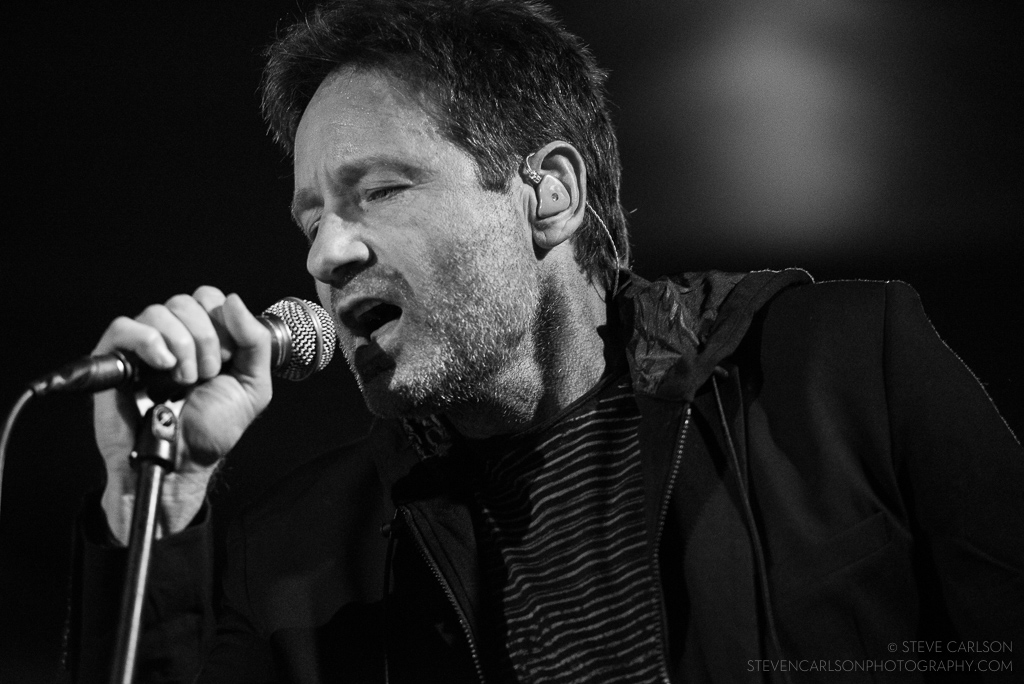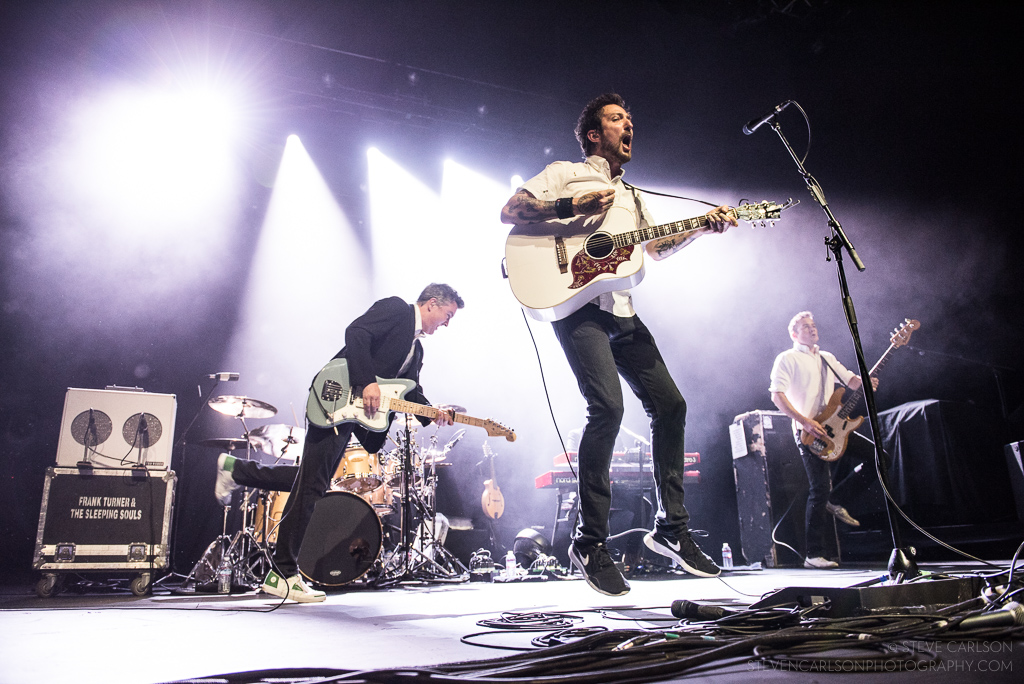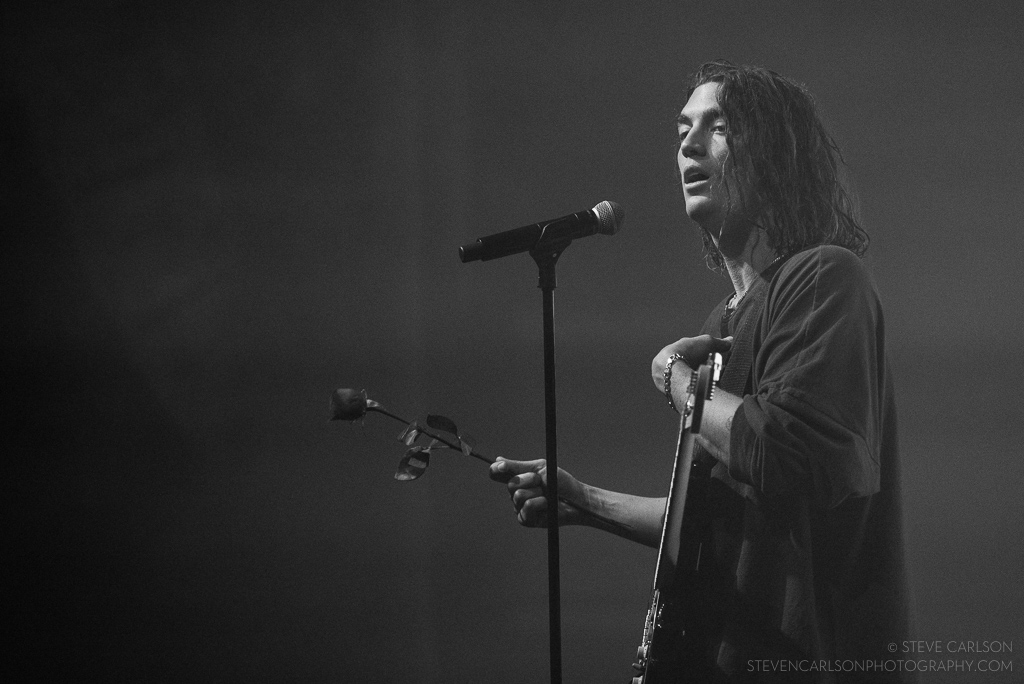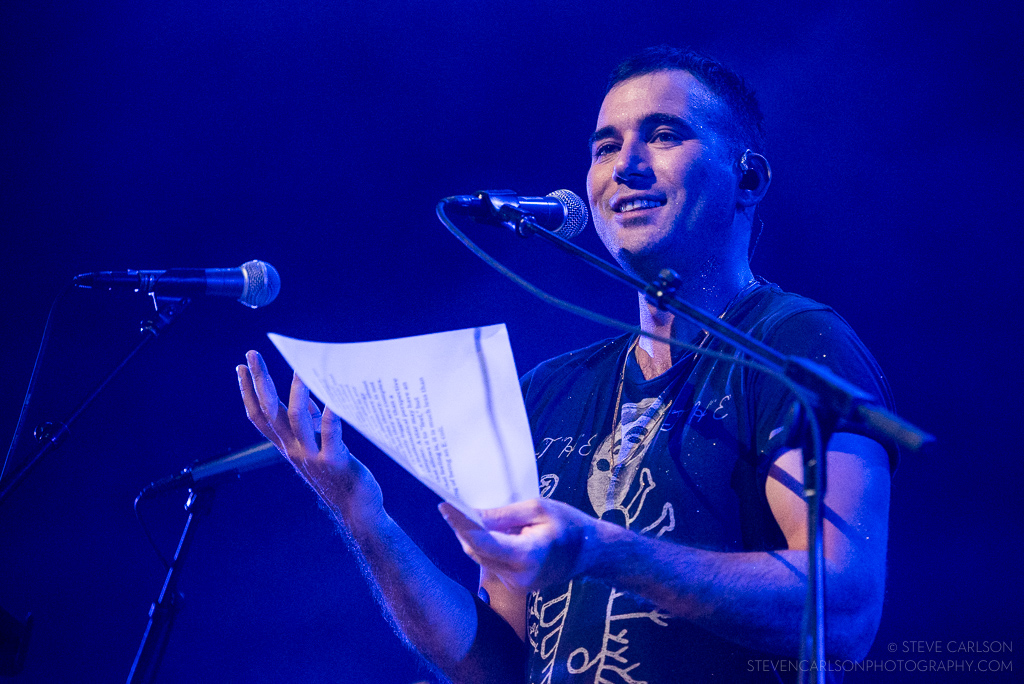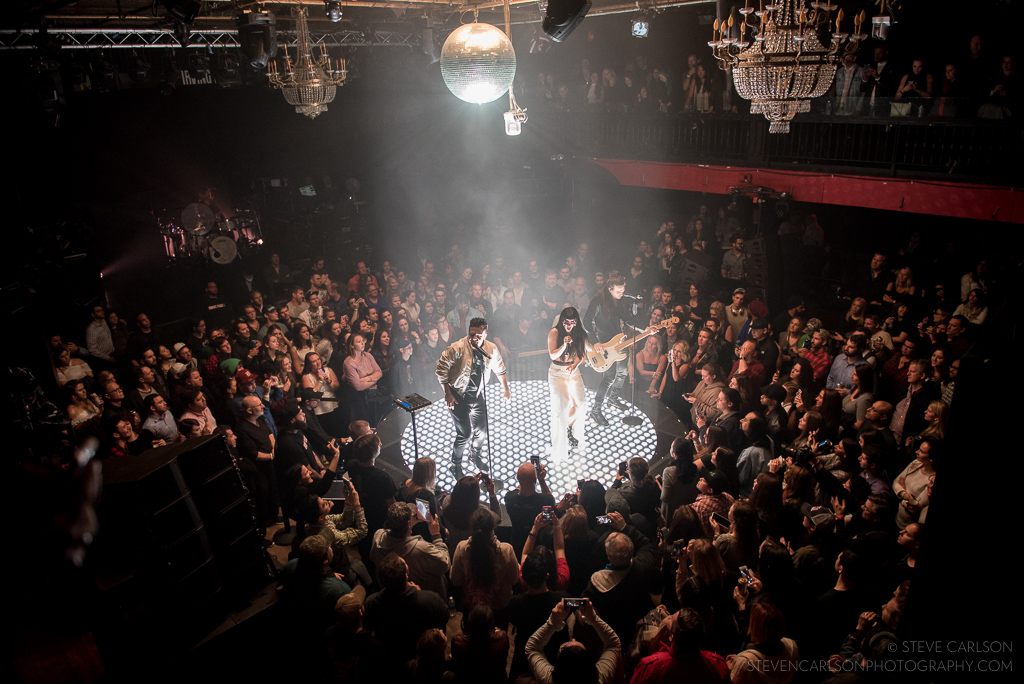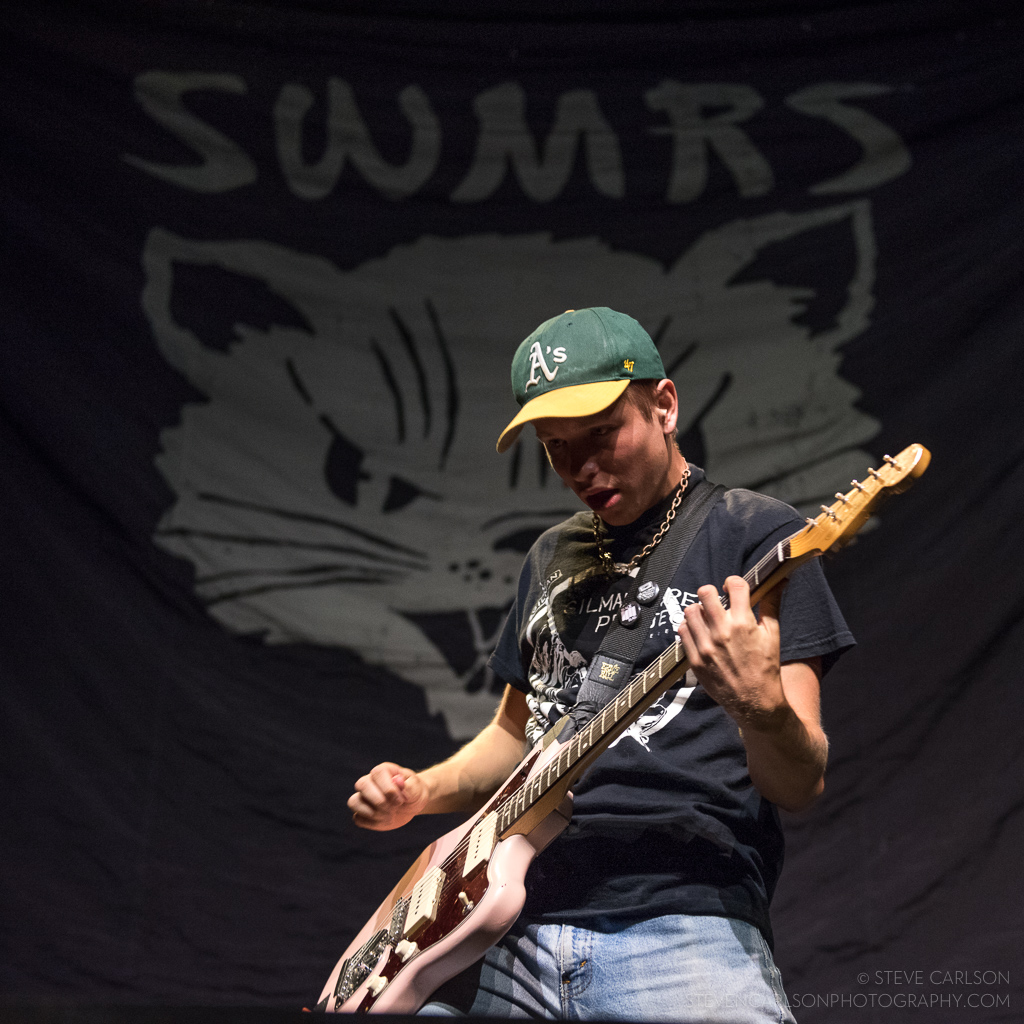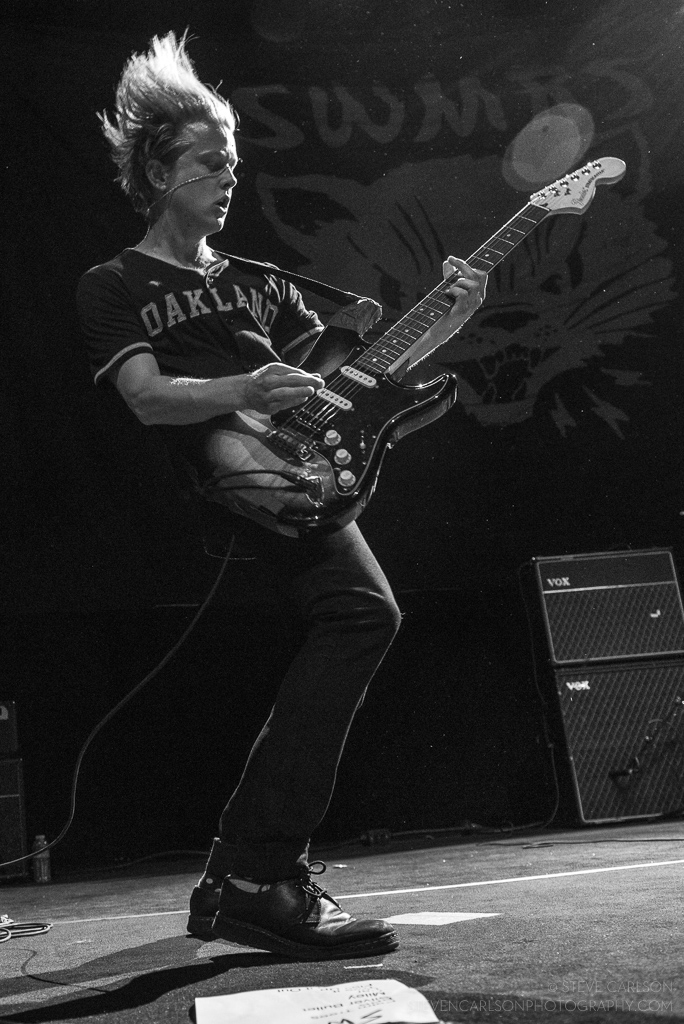Another year, another retrospective of my concert photography adventures. I always look forward to writing these posts because it's often easy to forget about the shows I shot just a month or two ago, much less a year ago, and this little trip down memory lane is a great reminder of all the fun I've had in the last year.
As always, this is obviously not an exhaustive list of the shows I've shot, nor is it a collection of my favorite or best shots. But each shot tells a piece of the story, and every show carries some special weight for me. And truly there's been some amazing shows this year, so let's get into it.
First up, Fox Mulder! Correction, that's David Duchovny, the X-Files actor who has created a second career for himself as a rock 'n roll artist. When I heard that David would be playing at a smallish basement club in San Francisco, I knew I had to shoot it. The X-Files were must-see TV for me back in college, and I'm pretty sure that was true for the entire audience at his show as well. I was given the opportunity to shoot the entire set, and though the light was not ideal, I was pretty happy with the shots I was able to get. You can find more of those photos on the blog post I wrote after the show.
David Duchovny
David Duchovny wasn't the only hero of mine I had the chance to photograph in a small club this year. I was also grateful to catch Filthy Friends, a musical collaboration that features Sleater-Kinney frontwoman Corin Tucker and R.E.M.'s legendary guitarist Peter Buck.
R.E.M. was one of those bands I didn't appreciate until I was in college, right around the time Monster and New Adventures in Hi-Fi were propelling the band to new heights. But once I discovered that they had more songs than just "Shiny Happy People" and "Losing My Religion", I was hooked. Peter and his distinct Rickenbacker guitar tones were a big part of why.
Peter is an interesting guy. He helped define one of the most important and popular alternative rock bands of all time and is revered by some of the greatest musicians alive, but since R.E.M. broke up in 2011 he records and tours with his numerous side projects, slumming it in tiny clubs and just playing music for the fun of it. The man cares nothing for the music industry, for the expectations put on musicians, for the fame. He cares about making music, and that's it. I expected him to be too important, too famous to dwell amongst the fans after the show was over, but there he was, signing autographs at the merch table like a hungry young musician might. There's something deeply inspiring about that no matter what form of art you create.
Peter Buck of R.E.M., Filthy Friends, and a bunch of other bands you probably haven't heard of
Since we're on the theme of small clubs... one of the most fun shows I had the chance to cover this year was in a small club in New York City called Irving Plaza. I found myself traveling to the Big Apple this spring for a conference related to my day job, and since I was traveling alone I knew I'd have some time to kill in the evenings. Lo and behold, it turned out that The Band Perry, a now-massively famous country band that I once photographed performing outside the cafeteria at Yahoo HQ before they became famous, would be squeezing into Irving Plaza to play an intimate show for fans and industry folks, debuting a little of their new pop-oriented sound. I worked a few connections and ended up getting to shoot the show for a NYC-based online magazine.
This wasn't your normal club show, however. The Band Perry don't usually play clubs anymore, so this was billed as a "pop-up" tour. Which in part meant they constructed an in-the-round stage in the center of the small room and brought in a higher production value than most bands who play such rooms. The show was short (maybe an hour tops?) and there was no opening act, but it did not disappoint.
The Band Perry at Irving Plaza, NYC
Moving from NYC to the Jersey shore now... I was fortunate to shoot one of my photographic muses, Jack Antonoff of Bleachers, once again at the Fox Theater in Oakland. Jack puts 110% into his performances, every single time, so I almost can't fail to get an amazing shot of him. He makes my job so easy! I hope to never miss one of his performances when he comes through the Bay Area.
Jack Antonoff, looking all Springsteen-esque
Here's a show I actually didn't end up getting to shoot, but I have to mention anyway. You may remember from last year's review that in 2016 I had the chance to finally shoot one of my all-time favorite bands, Mutemath, when they opened for Twenty One Pilots in Berkeley. At the time I somewhat prophetically mused that "I'd narrowly missed shooting those guys a couple of times previously, and wondered if I'd ever get the chance." Well, little did I know how close I came to missing that chance completely. Only months after wrapping up the support slot on that tour, and shortly before the release of their incredible 5th LP Play Dead, the band announced that founding bassist Roy Mitchell-Cárdenas would no longer be touring with the band. And then, just five months later, it was announced that legendary drummer/animal Darren King, the driving force of the rhythm section and creative yin to Paul Meany's yang, would be leaving the band completely for unspecified reasons. (Darren's departure was announced on 808 Day, which I find depressingly coincidental.) This just weeks before their fall tour was to begin and their new album released. The news was devastating to fans, and felt like a death knell for a truly incredible band. Having already replaced one original member a few years back, only one original member would now remain, at least when playing live.
But all was not lost. Old friends of the band stepped into the vacant roles and rehearsed night and day, and the tour went on with convincing vigor. And when they passed through San Francisco for a date at the Fillmore in October, it felt as though they never missed a beat. Sure, it wasn't quite the same Mutemath I've enjoyed in the past. But the new songs sounded amazing live, and the energy in the room was off the charts.
And here's the most interesting part: new drummer David "Hutch" Hutchinson, who had been working as a an EMT for more than a decade before the life-changing call came to take Darren's seat at the drum kit, found himself called back into life-saving duty at The Fillmore. Midway through the show a young fan at the front passed out, apparently exhausted and suffering from hypoglycemia. The band stopped mid-song and Hutch jumped off the stage to administer first aid while Paul played a beautiful and calming rendition of "You Are Mine" solo.
Never seen anything like it before.
Mutemath at The Fillmore, SF
Mutemath wasn't the only fun show I went to in October. October is often one of the busiest months of the year because it seems like all the big tours come through around the same time in mid-autumn. I could find an amazing show to shoot every single day of the month if I was crazy enough.
But October turned out to be a month of surprises for me. I started out the month with a bunch of great shows I expected to shoot, and ended up shooting none of them. Some were cancelled, some didn't come through with approvals, and some I ended up having scheduling conflicts. But the replacement shows ended up being even better.
First up, I had the chance to shoot at Levi's Stadium in Santa Clara, CA for the first time as Coldplay came back to town at the tail end of their US tour. I hadn't seen Coldplay since 2002 when they played the Greek Theatre in Berkeley, and it's safe to say their live show has evolved a bit since those days. It was pretty much a photographer's dream: pit access along the catwalk, confetti, pyrotechnics, and a very energetic Chris Martin making ample use of the catwalk, all in the first three songs. Most bands won't give you all that right out of the gate, preferring to save some surprises for the end. But Coldplay held nothing back, thankfully. Those guys put on a heck of a show, and I'd highly recommend seeing them next time they tour.
Coldplay, descending to earth on a rainbow from a confetti cloud
And then, a couple of weeks later, I had the chance to shoot Arcade Fire for the first time when they headlined Oracle Arena in Oakland, CA. This one wasn't a pit shoot; instead they positioned us back by the soundboard - but outside the crowd barrier. Not sure why they didn't afford us the protection of being behind the barrier as is normally done; who wants to try and grapple with large amounts of expensive camera gear while people squeeze by in the dark with overflowing beer cups in both hands?! But at least the show was in the round, which made the distance from the stage a bit less, and the show was pretty amazing, from what I saw of it before I was escorted out at the end of the third song.
I've always loved the ceiling of the Oracle, and I knew going in that I had to get a wide-angle shot that highlights the architecture of the place. In some ways the ceiling reminds me a little bit of Madison Square Garden, but perhaps a bit less finished. Being in the round and positioned off-center only makes for a stronger shot, I think! I was thrilled with the results.
Arcade Fire, in the round
To finish the year off, I had the opportunity somewhat last-minute to photograph a rare performance by Thom Yorke of Radiohead at the Fox Theater. Thom, along with longtime Radiohead producer Nigel Godrich and audiovisual artist Tarik Barri, only played two shows in California - one in LA and one here in Oakland - before heading off to headline the Day For Night festival in Houston, so I guess our show was a rehearsal of sorts. I've yet to see Radiohead live but I've long admired their creative spirit, so it was a bit of a treat to catch their mad genius frontman in person like this. Unfortunately Thom didn't want photographers getting too many good shots of him, apparently, because he had the photographers (all 8-10 of us by my estimate) shooting from the balcony aisles, and in near darkness for most of the time we were given. Oh well, it was worth it, if only because it gave me an excuse to finally try out the Nikon 200-500 f/5.6 I've had my eye on for awhile!
Thom Yorke and Nigel Godrich
In conclusion, 2017 was another great year for me. I shot some of my biggest shows to date, contributed to a few new publications, and continued to refine my approach to the craft. I've been a little pickier about the shows I'll agree to shoot in an effort to maintain better balance with my day job, and I think it's been good for me. I'm looking forward to a bunch of great shows I've already booked for 2018, and hopefully pushing myself to get a little better every day.
Lastly, I wouldn't be doing this if it weren't for the fans who continue to inspire, whether it's with kind words at a show, "likes" on an Instagram post, or just showing up to scream their heads off for their favorite bands. Thank you, fans, for all of that. A great fan base makes all the difference, not just for the bands on stage but also for people like me working unnoticed in the narrow gap between the stage and the audience, and I can't stress that enough. Rock on.
See you in 2018.
Want to see a few more photos? Check out the slideshow below!
